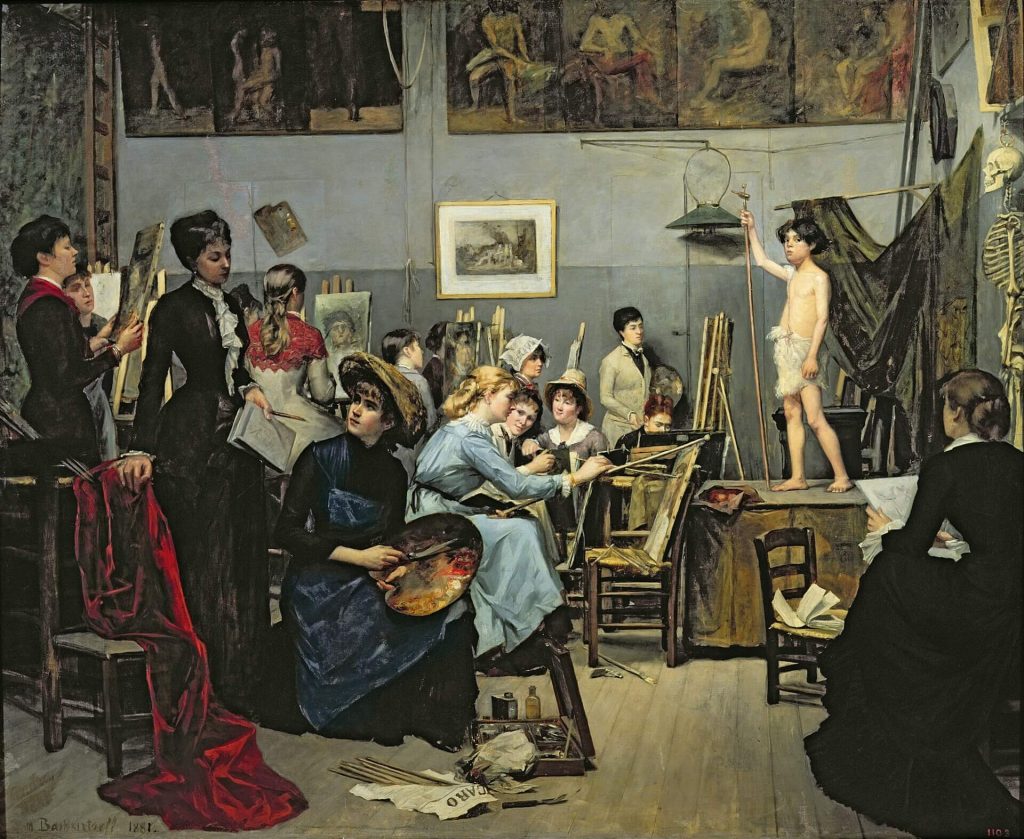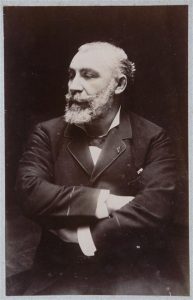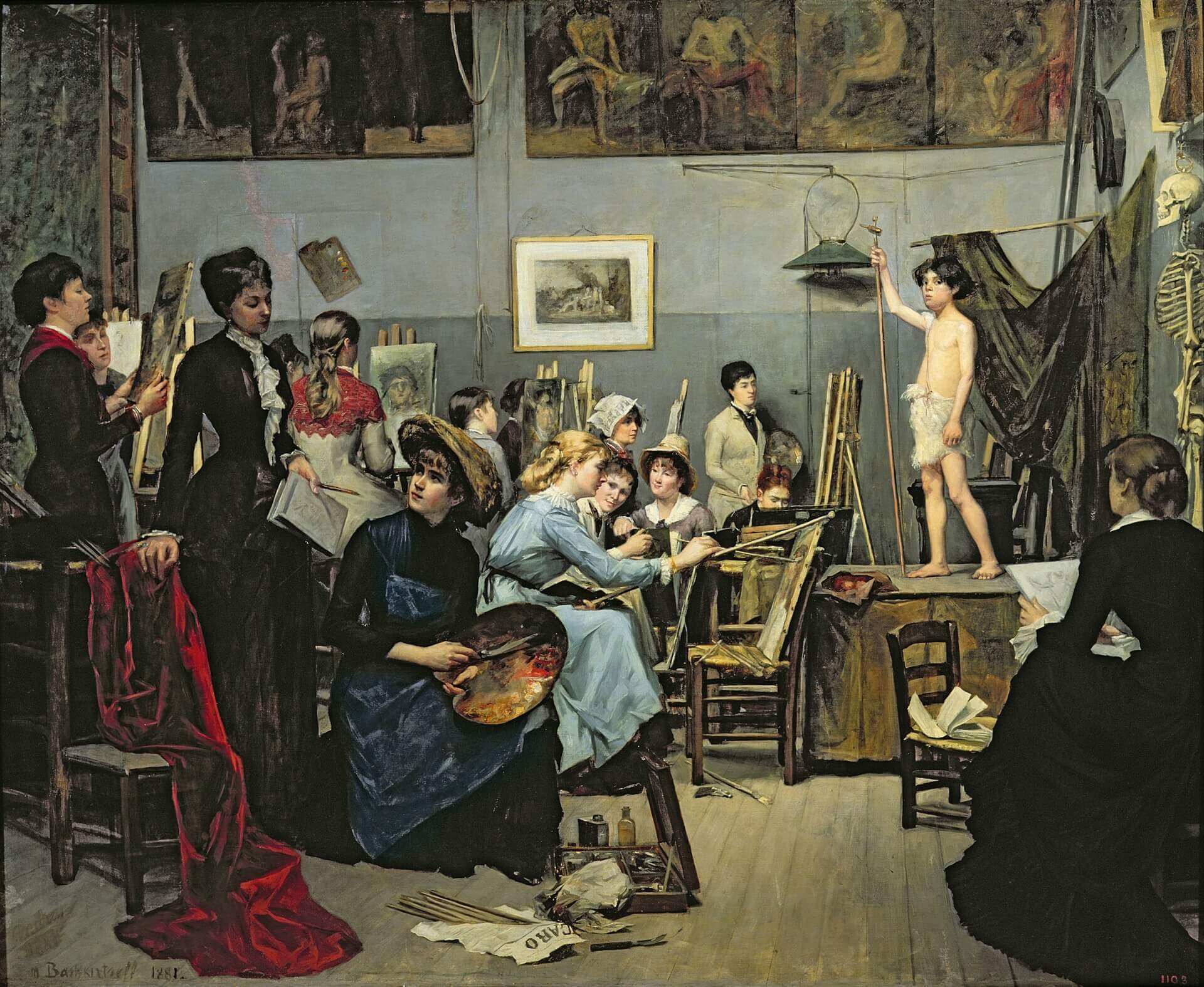In the realm of artistic expression, few experiences rival the intimate and dynamic nature of drawing the figure from life. Life drawing sessions offer artists a unique opportunity to hone their skills while delving into the intricacies of human anatomy. A life drawing workshop is nonetheless more than just a class; it is a celebration of the human form and a testament to the power of observation and expression. Let’s embark on a short journey to understand the essence of drawing from life and the appeal it holds for both emerging and experienced artists alike.

In the studio by Marie Bashkirtseff, 1881
In antiquity, there was already a profound appreciation for observing the human body and a dedication to representing it realistically. Although artists during this period lacked formal anatomical studies, the realistic portrayal of anatomy in statues and pottery remained a crucial aspect of artistic expression. The famous Greek sculptor Polykleitos even wrote a treatise detailing theories on proportions in the human body. During the Renaissance, marked by a renewed interest in classical art and a resurgence of scientific inquiry, artists like Leonardo da Vinci and Michelangelo conducted extensive anatomical studies and utilized life drawing as a means to refine their skills. Later, life drawing became a standard part of artistic training in art academies.
At its core, life drawing sessions center around the observation and rendering of the human figure. Artists gather to capture the nuances of the human body before them. The direct observation of a model provides a three-dimensional understanding of the body’s structure, proportions, and muscle movement. Unlike drawing from photographs or imagination, life drawing brings an immediacy and authenticity that adds a profound dimension to the artistic process for aspiring and seasoned artists. Central to the life drawing experience is the model, who assumes a variety of poses that can range from long poses to short gestures aimed at capturing the essence of movement in a matter of seconds. The latter often serve as a warm-up for the artists. The variety of poses challenges artists to capture the subtleties of the human figure. However, the model’s role is not merely to serve as a visual subject, but to convey emotion and a sense of the human spirit. The infinite variations of shape, contour, and expression of our bodies become the ultimate celebration of the human form.

Rodolphe Julian
In France, artists can draw from life in diverse settings, including the Atelier Libre, a practice that originated in Paris in the late 19th century. The dominant academic style in French art schools at that time favored historical and mythological subjects, classical techniques, and adherence to established conventions. Those who did not align with the academic style faced challenges in gaining acceptance. Foreigners encountered barriers to accessing formal art education, while women were simply excluded from it. The Atelier Libre emerged as indispensable for artists seeking a space to draw and paint from life models without rigid academic constraints, fostering a far more inclusive environment. The Atelier Libre allowed artists, both men and women, to work at their own pace and experiment with styles, emphasizing self-expression, exploration, and collaboration among like-minded individuals. For contemporary artists, the allure of Atelier Libre lives on in the form of places like ours.
The diversity of artistic approaches artists can adopt is the distinctive feature of drawing sessions in the spirit of Atelier Libre. Whether using charcoal, graphite, ink, pastels, or paints, each medium brings its own set of challenges and opportunities. Artists may choose to focus on line and contour, delve into the play of light and shadow, or experiment with color and texture. Participating in such life drawing workshops offers more than just individual artistic growth through experimentation; it fosters a sense of community. Artists gather to share insights, exchange ideas, and offer constructive critique. This collaborative atmosphere encourages artists to expand their perspectives and refine their skills through shared knowledge and experience.
Ready to try drawing from life with us? Join our weekly 2-hour untutored life drawing sessions featuring the finest Parisian models. Check out our full schedule here.
